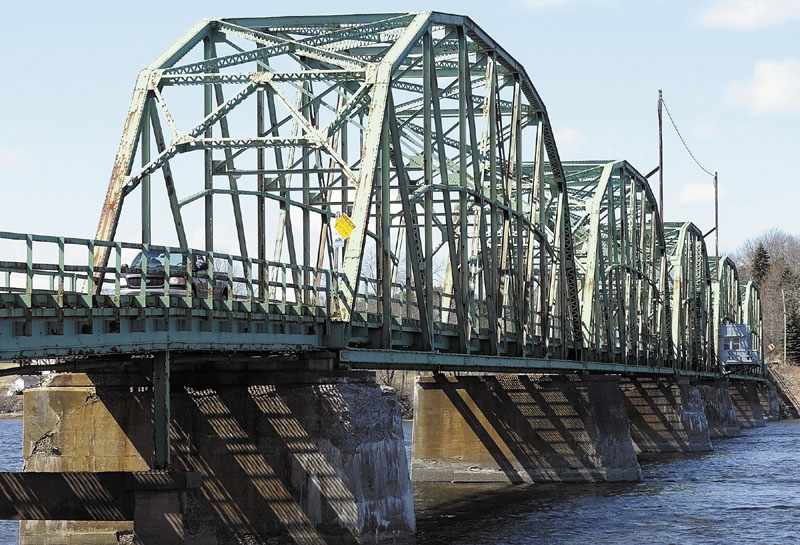DRESDEN — A new $25 million Richmond-Dresden bridge will be at least 75 feet above the Kennebec River to allow the Coast Guard travel under it and upriver to break up ice.
The state Department of Transportation plans a public meeting Thursday to discuss plans for the new bridge, which would replace the 80-year-old low-slung swing bridge that connects Richmond and Dresden across the river.
The meeting is at 6 p.m. at Pownalborough Hall on Patterson Road, at the intersection of routes 197 and 128.
At a previous meeting to discuss the bridge, which takes Route 197 and about 3,200 vehicles a day across the river, several area residents expressed concern the new fixed span bridge will be so much taller than the swing bridge it will dramatically change the character of the area.
Nate Benoit, project manager on the bridge project for the state transportation department, said plans still call for a fixed bridge tall enough to accommodate boat traffic below. That means the bottom of the bridge must be at least 75 feet above the river, at high tide.
Benoit said the bridge must be at least that high so the Coast Guard’s Thunder Bay can get underneath and upriver to help break up ice in the river between Richmond and Gardiner and prevent flooding.
He said the Coast Guard is congressionally mandated to break up ice on the Kennebec. And while the Coast Guard sometimes uses shorter ice-breaking watercraft, such as the Shackle, Tackle, and Bridle on the Kennebec — as it is this year because there’s no ice to break up — it also needs to be able to get the Thunder Bay under the bridge to assist, Benoit said.
“Those three other ships are all nearing the end of their life,” Benoit said. “The Thunder Bay is only through about half of its life. The best tool they have to break ice is the Thunder Bay. For them to be able to do their job, and ensure residents on the river are not flooded out, they need to be able to get the Thunder Bay up there.”
Benoit said because the new bridge will be about 1,300 feet long, the rise to 75 feet can be gradual, and he thinks it will blend in with its surroundings.
He said the transportation department would have a photo rendering of a typical section of the proposed new bridge for people to see at Thursday’s meeting.
The bridge would be upstream of the existing bridge. The old bridge would be left in place and used by traffic while the new bridge is built.
Work is expected to start in the spring of 2013 and take about two-and-a-half years to complete, including removal of the existing bridge.
Benoit said Thursday’s session could be the final public meeting regarding the bridge, but that depends on the public reaction.
“We’d like to see support for what we’ve come up with,” he said. “If there is a lot of opposition, we may need to react to that, and need another meeting.”
Some residents at a previous meeting urged the state officials to replace the low-slung swing bridge there now, a section of which pivots to let tall watercraft pass through, with a similar swing bridge.
But officials said moveable bridges are more expensive both to build and maintain.
The bridge replacement will be funded, in part, with a $10.8 million federal grant approved late last year.
Keith Edwards — 621-5647
kedwards@centralmaine.com
Send questions/comments to the editors.




Success. Please wait for the page to reload. If the page does not reload within 5 seconds, please refresh the page.
Enter your email and password to access comments.
Hi, to comment on stories you must . This profile is in addition to your subscription and website login.
Already have a commenting profile? .
Invalid username/password.
Please check your email to confirm and complete your registration.
Only subscribers are eligible to post comments. Please subscribe or login first for digital access. Here’s why.
Use the form below to reset your password. When you've submitted your account email, we will send an email with a reset code.